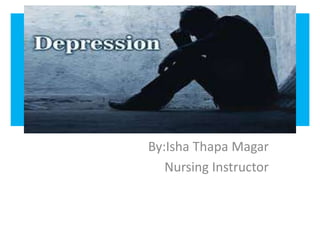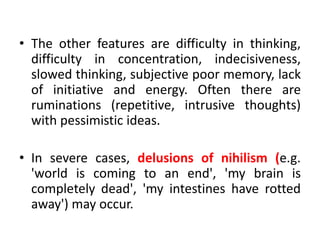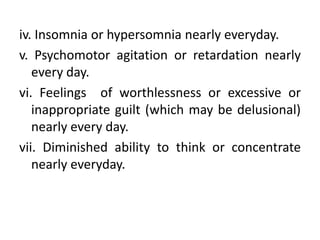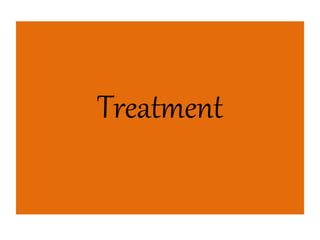Major depression is a mood disorder characterized by persistent sadness, lack of interest, and other symptoms affecting various aspects of life. It has a significant incidence rate of about 6% in the general population, with genetic, biochemical, psychosocial, and physiological factors contributing to its onset. Treatment options include antidepressants, psychotherapy, and nursing interventions aimed at safety and emotional support.
































































